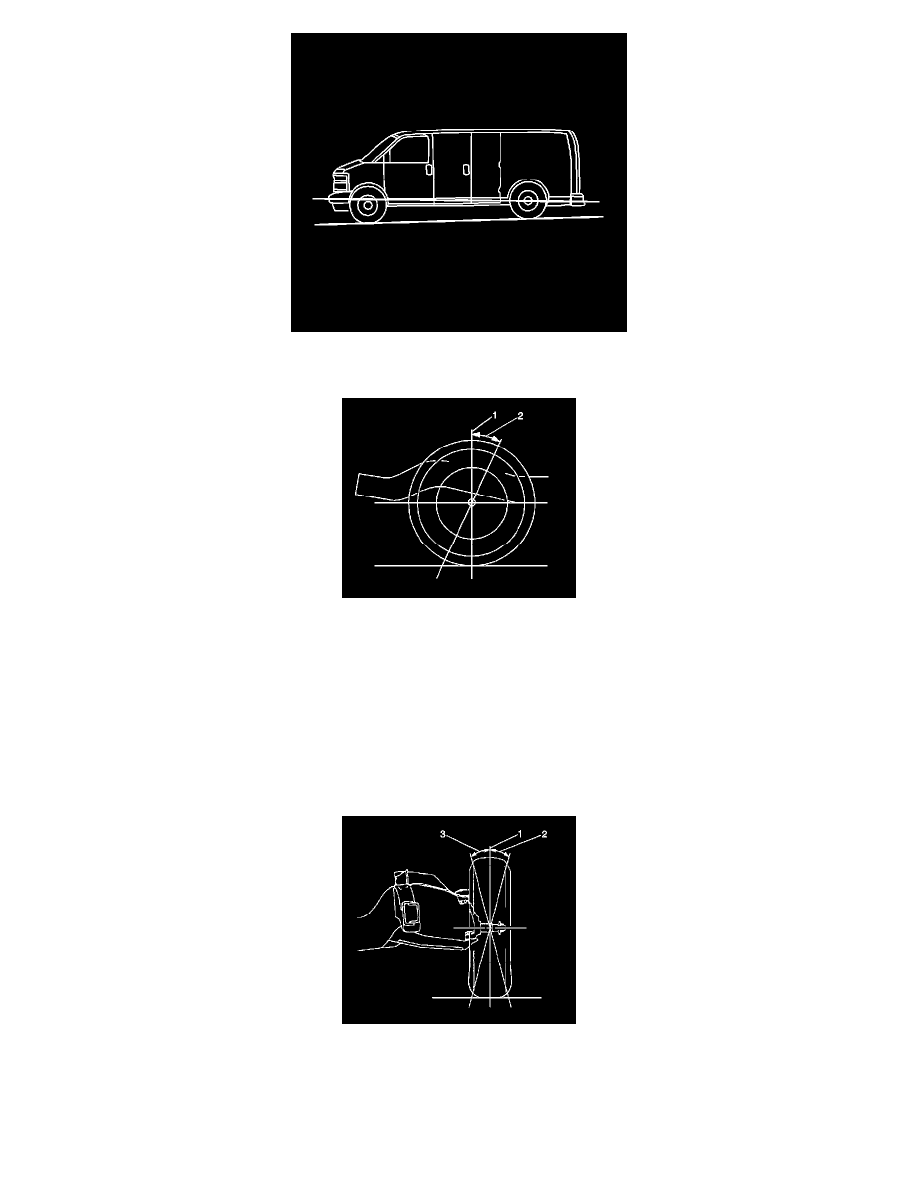Express 1500 RWD V8-5.3L (2008)

3. Frame angle is negative when lower in the rear. Measure both sides of the frame and take an average from the measurements. Then subtract the
average frame angle from the caster reading when making adjustments.
4. The caster and camber adjustments are made by rotating the offset cam bolt and the cam in the slotted frame bracket in order to reposition the
control arm.
Important: Before adjusting the caster and camber angles, jounce the front bumper three times to allow the vehicle to return to normal
height.
Measure and adjust the caster and the camber with the vehicle at curb height. The front suspension Z dimension is indicated in Trim
Heights. Refer to Trim Height Inspection (See: Steering and Suspension/Suspension/Testing and Inspection/Component Tests and General
Diagnostics/Trim Height Inspection) .
For an accurate reading, do not push or pull on the tires during the alignment process.
5. Determine the caster angle (2) .
6. Determine the positive camber (2) or negative camber (3) angle.
